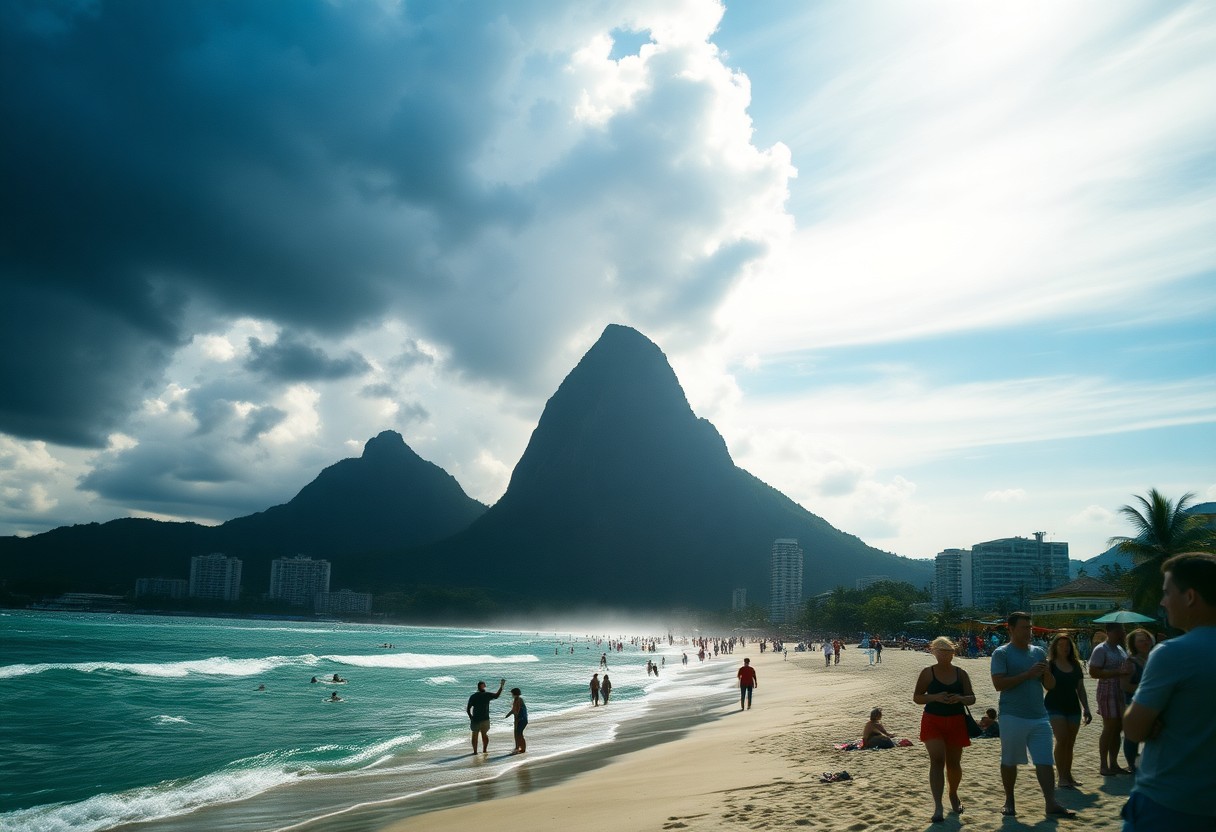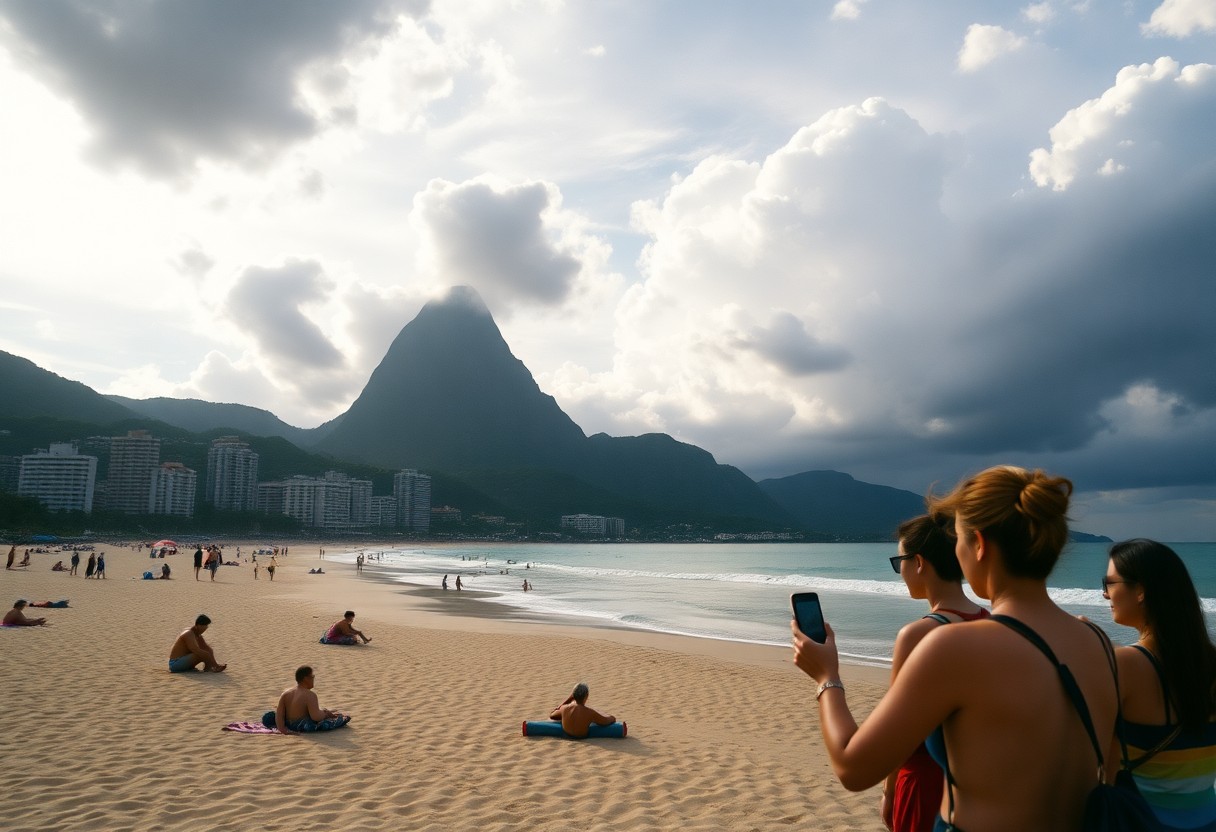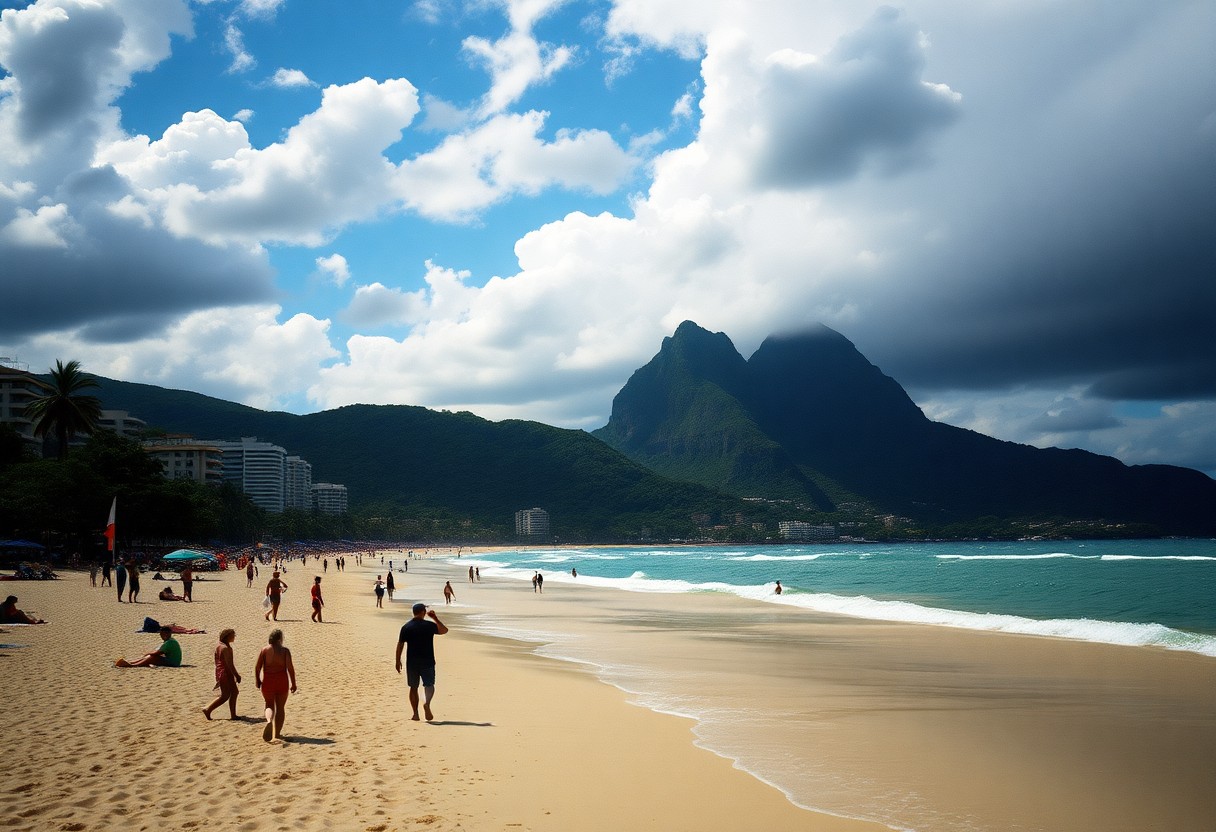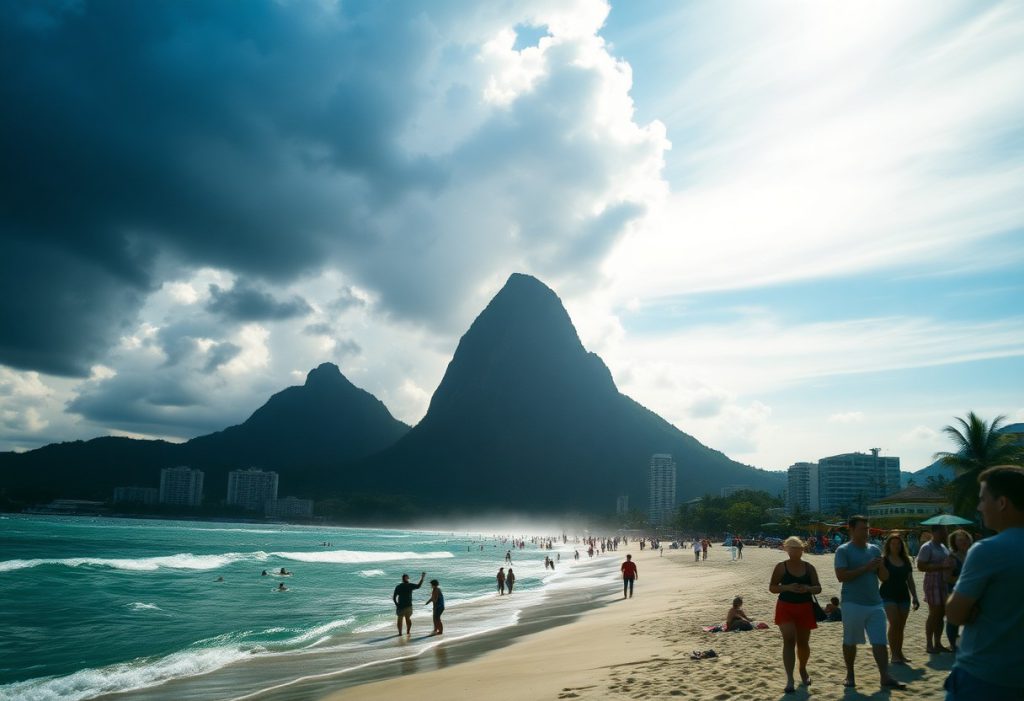As you embark on your thrilling adventure to Rio de Janeiro, understanding the optimal times for your visit can dramatically enhance your travel experience. This lively city boasts warm temperatures year-round, yet each season comes with unique features that might sway your travel decisions. The vibrant summer months, spanning from December to March, are alive with colorful Carnival celebrations, but they also bring heavy rains and substantial crowds. Your ideal travel period largely hinges on your personal inclinations: if you are drawn to sunbathing and beach fun, the spring months from September to November provide an ideal climate with mild temperatures and fewer tourists. On the other hand, budget-conscious travelers might find the winter months (June to August) offer more attractive pricing. By aligning your travel plans with the local weather and seasonal festivities, you can maximize your enjoyment of Rio.
Explore the Diverse Weather Patterns of Rio de Janeiro Throughout the Year
Before you finalize your travel itinerary for Rio de Janeiro, it’s vital to grasp the city’s tropical climate nuances. The average temperatures fluctuate between 68°F and 88°F (20°C to 31°C) all year long. It’s important to acknowledge two main seasons: a warm and humid summer stretching from December to March, and a cooler, drier winter from June to September. Each season offers its unique benefits and drawbacks, making it essential to select the right time for your visit based on your preferred activities and comfort levels.
Comprehensive Seasonal Temperature Insights for Better Travel Planning
| Season | Temperature Range |
|---|---|
| Summer (Dec-Mar) | 77-88°F (25-31°C) |
| Winter (Jun-Sep) | 68-75°F (20-24°C) |
Throughout the year, you can anticipate enjoyable temperatures in Rio. The summer months experience peak warmth, while winter offers cooler conditions that are perfect for outdoor adventures. Recognizing these temperature shifts is crucial for effectively planning your activities, ensuring you can savor everything that this magnificent city has to offer.
Essential Rainfall and Humidity Considerations for Your Trip
When arranging your journey to Rio, it’s vital to consider the city’s rainfall patterns. Here are some key factors to keep in mind:
- Rainy season: December to March
- Average annual rainfall: 44 inches
- Peak humidity levels: 80% during summer
- Driest months: June to August
The humidity in Rio can significantly influence your comfort level while exploring the city. Here are a few notable points to remember:
- Morning fog may hinder visibility at key tourist spots
- Refreshing coastal breezes can offer pleasant relief from high humidity
- Evening humidity tends to rise near the beaches
- Air conditioning is readily available in most accommodations

Embrace the Vibrancy of Rio’s Peak Season from December to March
If your travel schedule aligns with Rio’s peak season, brace yourself for intense heat and exhilarating celebrations. This thrilling time coincides with major events like New Year’s Eve festivities and the globally recognized Carnival. It’s wise to secure your accommodations well ahead of time, as hotels are quickly booked during these lively months. Immerse yourself in the energetic atmosphere, but remain aware of the challenges that accompany it.
Climate and Event Highlights During the Peak Season
During these summer months, expect a blend of sunshine and rain, with temperatures potentially reaching up to 40°C (104°F). Frequent afternoon rain showers are typical, particularly in December and January, leading to heightened humidity that can make it feel even hotter. This season is marked by major festivals and vibrant celebrations, creating an electrifying ambiance throughout the city.
Evaluating the Pros and Cons of Traveling During Summer
| Advantages | Disadvantages |
|---|---|
| Dynamic festival atmosphere | Overcrowded beaches |
| Ideal beach conditions | High humidity levels |
| Exciting events and activities | Increased accommodation prices |
| Vibrant nightlife options | Longer wait times at attractions |
| Excellent swimming conditions | Afternoon rain showers |
With this understanding, you can approach your peak season visit with a clearer perspective of what to anticipate. While the experience is indeed lively and vibrant, managing crowds and expenses is crucial for a satisfying trip. Moreover, advanced planning is essential; aim to book your flights and accommodations at least 3-4 months in advance, particularly if you wish to partake in the Carnival festivities. To enhance your experience, begin your daily activities early to avoid the harshest sun and longest lines.
Optimize Your Experience During the Shoulder Season (April-May)
The shoulder season strikes a perfect balance between Rio’s peak and low seasons. During these months, expect pleasant temperatures averaging 75°F (24°C), along with fewer tourists, creating an optimal environment for discovering the city’s many attractions. This period is especially appealing for those seeking a more relaxed experience without the overwhelming crowds typical of summer.
Key Climate Features to Note in the Shoulder Season
As you enjoy the shoulder season, you’ll discover mild and comfortable weather in Rio de Janeiro. Compared to the summer months, there are fewer rainy days, with only occasional light showers. The humidity levels decrease significantly, making outdoor activities much more enjoyable. Ocean temperatures remain inviting for swimming, hovering around 73°F (23°C), allowing you to comfortably indulge in beach activities.
Travel Advantages and Cost Savings During the Shoulder Season
Budget-conscious travelers will find that April and May offer excellent savings opportunities. You’ll discover that hotel rates can be up to 30% lower compared to peak season, and shorter wait times at popular sites like Christ the Redeemer and Sugarloaf Mountain will enhance your visit. The shoulder season represents a fantastic time to relish favorable weather and accessibility.
The mild climate not only allows for enjoyable beach activities without overwhelming crowds but also provides a comfortable backdrop for exploring outdoor markets and taking advantage of discounted rates on tours and experiences. The delightful weather invites you to hike in Tijuca National Park or engage in walking tours through Rio’s historic neighborhoods.

Experience the Unique Appeal of Rio’s Winter Months (June-September)
Rio’s winter months present a refreshing change, showcasing pleasant temperatures ranging from 18-25°C (64-77°F). This season is marked by lower rainfall and humidity levels, making it perfect for various outdoor activities. While beach outings may be less frequent, you’ll encounter fewer tourists and more affordable hotel rates, enabling a distinct experience in the city.
Winter Temperature and Weather Overview
| Feature | Description |
|---|---|
| Average Temperature | 18-25°C (64-77°F) |
| Rainfall | Minimal |
| Humidity | Lower than summer |
| Sunshine Hours | 6-7 hours daily |
During winter, minimal rainfall occurs, allowing for clear views of Christ the Redeemer and Sugarloaf Mountain. You’ll enjoy stable weather patterns with abundant sunny days, making it an excellent time for sightseeing and outdoor activities.
Engaging Tourist Activities and Benefits in Winter
Winter offers some of the best opportunities for sightseeing in Rio. Anticipate shorter lines at major attractions and comfortable hiking conditions in Tijuca National Park, allowing you to immerse yourself in the stunning natural beauty of the region. This season is also ideal for urban exploration and photography, as you can enjoy lower accommodation costs while experiencing more authentic local interactions with fewer tourists around.
Your outdoor adventures are less likely to be interrupted by rain, facilitating a more leisurely exploration of the city. With fewer crowds, making reservations at popular restaurants and booking tours becomes much simpler. Overall, winter in Rio offers a unique combination of pleasant weather and enriching experiences.
Relish the Beauty of Rio in Spring (October-November)
Springtime in Rio brings a delightful change, showcasing a blend of mild temperatures and fewer tourists. Visiting during these months provides an excellent chance to discover the city’s attractions without the hustle and bustle typical of the summer rush. Beaches become increasingly enjoyable as temperatures average around 77°F (25°C), and access to the city’s iconic landmarks becomes more manageable.
Spring Weather Conditions to Expect
While spring ushers in pleasant temperatures, occasional rain showers can still occur. The humidity remains moderate, ensuring outdoor activities are comfortable and enjoyable. These weather conditions create an ideal setting for both beach relaxation and city exploration, with clearer skies offering stunning views of Christ the Redeemer.
Travel Benefits and Cost Advantages in Springtime
This season offers significant advantages for budget-conscious travelers, with lower accommodation prices and flight costs. You can expect:
- Hotel prices dropping by 20-30%
- Significant reductions in flight prices
- Shorter lines at major attractions
- Better availability for restaurant reservations
As tourism begins to pick up after the winter months, prices remain competitive, making spring an ideal time for travel.
Your visit during this season provides flexibility in planning, due to these enticing benefits:
- Access to last-minute bookings without inflated prices
- Options for upgraded accommodations at standard rates
- Special deals on guided tours
- More personalized service at restaurants and attractions
After assessing all four seasons, spring emerges as a smart choice for travelers seeking value and unforgettable experiences.

Vital Travel Planning Strategies for Your Rio de Janeiro Adventure
While Rio de Janeiro offers captivating experiences year-round, thoughtful planning is crucial for a seamless travel experience. Be sure to pack light and breathable clothing, along with adequate sun protection, irrespective of the season. Additionally, confirm that your travel insurance provides coverage for medical emergencies and theft. The safest neighborhoods for visitors are typically Copacabana, Ipanema, and Leblon, allowing you to feel secure while exploring. A combination of guided tours and independent exploration is the best way to fully engage with the city.
Recommended Duration for an Unforgettable Visit to Rio
A stay of at least 5-7 days is essential to fully appreciate the main attractions of Rio de Janeiro. This timeframe enables you to dedicate two days to iconic landmarks such as Christ the Redeemer and Sugarloaf Mountain, two days for beach relaxation, and one day for cultural experiences and local discovery. The remaining days can be reserved for spontaneous adventures or day trips to nearby attractions, further enriching your overall experience.
Budget-Friendly Tips for Your Rio Adventure
Your daily budget in Rio can range from $50-200, depending on your travel style and preferences. The most considerable expenses usually involve accommodation and activities. If you travel during the low season (March-November), you might enjoy savings of up to 40% on hotels and flights, making this an excellent time for a visit.
To maximize your savings, consider these essential tips: book accommodations well in advance, utilize public transportation whenever possible, dine at local eateries rather than tourist-centric restaurants, and invest in a Rio Pass for discounted access to attractions. Look for package deals during the shoulder season, and consider staying in neighborhoods like Flamengo or Botafogo for more economical rates.
- Always keep small bills on hand for local vendors
- Use reputable taxi apps for safe transport
- Pre-book major attractions online to avoid long lines
- Secure your valuables in your hotel safe
Essential Insights for the Informed Traveler to Rio de Janeiro
Rio de Janeiro stands out as a destination that offers year-round appeal, with each season presenting unique experiences. The city is most vibrant between December and March, when temperatures peak at 82°F (28°C) and iconic events like Carnival enliven the streets. While the summer months bring higher prices and larger crowds, they also provide an unmatched opportunity to immerse yourself in Rio’s rich culture. If you prefer a quieter experience, consider planning your visit during April-May or October-November, when pleasant weather and lower rates prevail. Ensure to book your accommodations early during peak season and stay mindful of the potential for heavy rainfall and flooding risks during the summer months.
Comprehensive Answers to Your Most Frequently Asked Questions About Visiting Rio
Q: Which months are optimal for visiting Rio de Janeiro for favorable weather and fewer tourists?
A: The months of April and May are the most suitable for visiting Rio. During this period, the weather remains warm at around 75°F (24°C), with reduced rain and fewer tourists. This makes for clear views of Christ The Redeemer and Sugarloaf Mountain, along with more attractive hotel rates. The beaches remain inviting for swimming, and you can explore the city’s attractions without the overwhelming crowds.
Q: When should I avoid traveling to Rio de Janeiro?
A: The months from December to March pose challenges due to daily temperatures soaring to 95°F (35°C) alongside frequent heavy rains. These months also draw the largest influx of tourists and the highest prices, particularly during Carnival in February. The combination of extreme heat, high humidity, and rainfall can hinder outdoor enjoyment, with hotel rates often increasing by 50-200% during this peak season.
Q: What weather conditions and events should I prepare for during Rio’s Carnival season?
A: Carnival season, occurring from February to March, brings soaring temperatures ranging from 85-95°F (29-35°C), along with the likelihood of afternoon rain showers. It’s advisable to book hotels at least six months in advance, as prices can triple during this busy time. The main parade lasts for five days, complemented by street parties that start early each morning. Be sure to pack lightweight clothing, rain gear, and sun protection. Staying near Copacabana or Ipanema beaches will ensure easy access to events and transportation options.
The Article: Best and worst times to visit Rio de Janeiro weather events and travel tips appeared first on https://rentacar24.org/
The Article Best and Worst Times to Visit Rio de Janeiro: Travel Tips and Weather Was Found On https://limitsofstrategy.com
The Article Best and Worst Times to Visit Rio de Janeiro for Travel Tips First Appeared ON
: https://ad4sc.com



Your insights on the seasonal dynamics of Rio de Janeiro resonate deeply with anyone hoping to experience the city beyond its touristy façade. I find the contrast between the vibrant energy of summer and the serene beauty of spring to be particularly fascinating. Each season offers its own rhythm, shaping not just the landscape but also the cultural tapestry of the city.
I’m glad to hear that my thoughts struck a chord with you. The seasonal shifts in Rio really do create a unique lens through which we can experience the city. Summer, with its buzzing beaches and street parties, draws you into the lively spirit of carioca life. It feels like the city comes alive, bursting with energy and color.